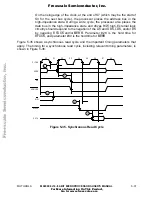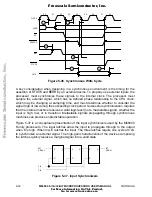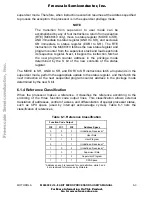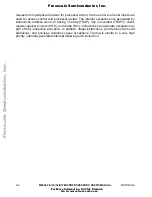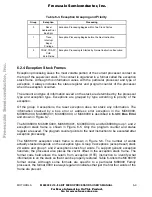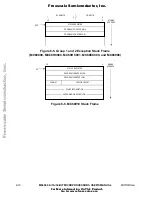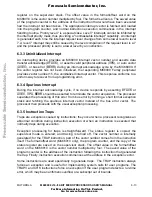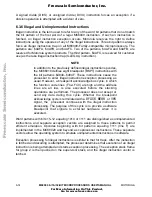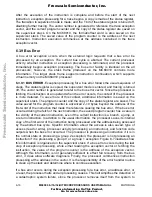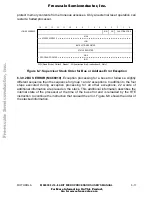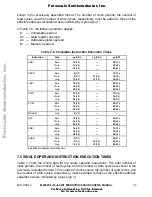
6- 12
M68000 8-/16-/32-BIT MICROPROCESSORS USER'S MANUAL
MOTOROLA
interrupt priority mask is set at level 7. In the MC68010, the VBR is forced to zero. The
vector number is internally generated to reference the reset exception vector at location 0
in the supervisor program space. Because no assumptions can be made about the validity
of register contents, in particular the SSP, neither the program counter nor the status
register is saved. The address in the first two words of the reset exception vector is
fetched as the initial SSP, and the address in the last two words of the reset exception
vector is fetched as the initial program counter. Finally, instruction execution is started at
the address in the program counter. The initial program counter should point to the power-
up/restart code.
The RESET instruction does not cause a reset exception; it asserts the
RESET
signal to
reset external devices, which allows the software to reset the system to a known state and
continue processing with the next instruction.
6.3.2 Interrupts
Seven levels of interrupt priorities are provided, numbered from 1–7. All seven levels are
available except for the 48-pin version for the MC68008.
NOTE
The MC68008 48-pin version supports only three interrupt
levels: 2, 5, and 7. Level 7 has the highest priority.
Devices can be chained externally within interrupt priority levels, allowing an unlimited
number of peripheral devices to interrupt the processor. The status register contains a 3-
bit mask indicating the current interrupt priority, and interrupts are inhibited for all priority
levels less than or equal to the current priority.
An interrupt request is made to the processor by encoding the interrupt request levels 1–7
on the three interrupt request lines; all lines negated indicates no interrupt request.
Interrupt requests arriving at the processor do not force immediate exception processing,
but the requests are made pending. Pending interrupts are detected between instruction
executions. If the priority of the pending interrupt is lower than or equal to the current
processor priority, execution continues with the next instruction, and the interrupt
exception processing is postponed until the priority of the pending interrupt becomes
greater than the current processor priority.
If the priority of the pending interrupt is greater than the current processor priority, the
exception processing sequence is started. A copy of the status register is saved; the
privilege mode is set to supervisor mode; tracing is suppressed; and the processor priority
level is set to the level of the interrupt being acknowledged. The processor fetches the
vector number from the interrupting device by executing an interrupt acknowledge cycle,
which displays the level number of the interrupt being acknowledged on the address bus.
If external logic requests an automatic vector, the processor internally generates a vector
number corresponding to the interrupt level number. If external logic indicates a bus error,
the interrupt is considered spurious, and the generated vector number references the
spurious interrupt vector. The processor then proceeds with the usual exception
processing, saving the format/offset word (MC68010 only), program counter, and status
F
re
e
sc
a
le
S
e
m
ic
o
n
d
u
c
to
r,
I
Freescale Semiconductor, Inc.
For More Information On This Product,
Go to: www.freescale.com
n
c
.
..

